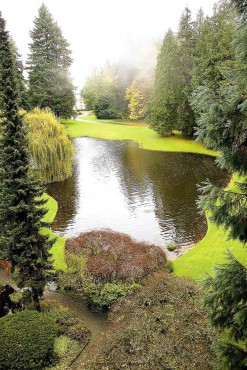
Between the time when we rake the last of autumn’s confetti from our lawns and the day we first glimpse the bright petals on the bare branches of the cherry, most of us never give a single thought to trees. Meanwhile, arborists, professional maintenance crews and gardeners in the know are concentrating more on trees than on any other aspect of the landscape.
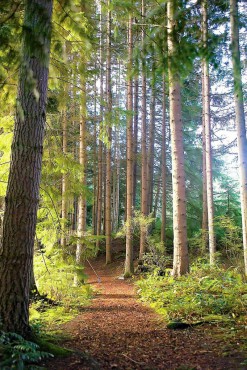
Winter is the time of the year when much of crucial tree care is performed for many reasons. The most obvious is that, denuded of leaves, the trunk and branch structure of a deciduous tree is clear as day. But more importantly from a perspective of tree vigor, winter dormancy is the ideal time for pruning because few insect pests are active and the tree will respond with hearty spring growth.
According to a Tree City USA Bulletin by Dr. James R. Fazio, tree specialists nationwide rank improper pruning as the No. 2 killer of street and park trees, just behind construction damage. If only our leafy friends could get up and run!
In this second article on tree care, Mike Juneau, Board Certified Master Arborist and owner of Juneau Trees and Landscape, shares more of his knowledge of how trees respond to and recover from pruning. He hopes to set the record straight on which pruning practices promote tree health and which are “killers.”
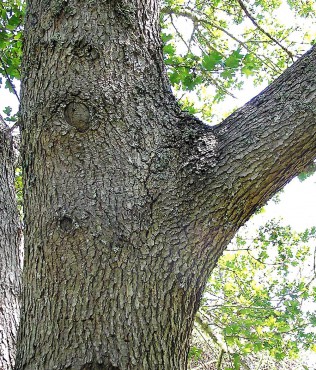
Location, Location, Location
How well a tree suits a location is the biggest indicator of the quantity and type of pruning it will require. A thoughtfully placed tree will need some pruning in its first 25 or so years for proper structure, but won’t require drastic measures to keep it from blocking a vista, growing under the eaves of a house, obstructing views of traffic or growing into power lines. The position of a tree is often out of our control, having been planted by a previous property owner or public agency responsible for maintaining easements. Thankfully, though, much of the time we do have control and tree selection should be taken seriously. Improper placement is the No. 3 tree killer, and we can prevent it.
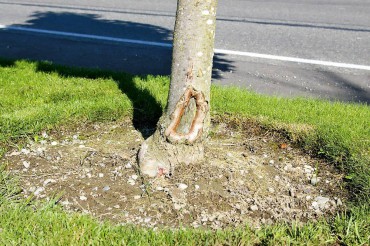
In fact, Mike Juneau says the majority of tree failures he sees are preventable. Risky pruning corrections arborists must perform to save mature trees would have been routine if done in the tree’s youth. This is because trees are flexible and vigorous when young. Just as people’s broken bones heal faster and with fewer complications early in life, so can trees best respond to damage when young.
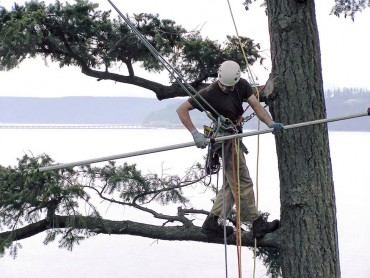
The specific pruning guidelines followed by International Society of Arboriculture (ISA) certified arborists dictate removing no more than 25 percent of the “green” of a healthy tree in one season, even less for mature or unhealthy trees. Arborists refer to the capacity to bounce back from pruning as the pruning budget and it is different depending on the species and age of a tree. And while it may seem common sense, Juneau reminds us to prune only when there is a structural, safety or health reason to do so. Shaping a tree into a pleasing ball is not a valid reason and only causes profuse, weak branching. Shortening a side branch that blocks the sidewalk is a valid pruning justification.
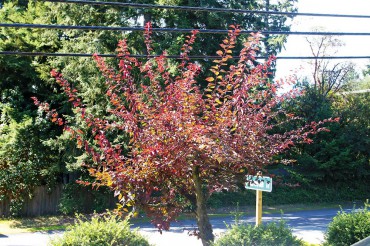
Trees don’t heal as we know it, they compartmentalize. When a tree is wounded (and to a tree a pruning cut is indeed a wound), or when the bark on the trunk is hit with a string trimmer, all sorts of diseases invade. Trees cannot regrow damaged wood, they can only wall it off, or compartmentalize, in an attempt to keep decay away from creeping into sound wood. Some trees are better at compartmentalizing than others, and those that do so poorly require careful, well-timed pruning.
Bigleaf maple, birch, willow, hemlock, plums and cherries are trees that are poor compartmentalizers and commonly fail from damage that other trees can better withstand simply due to genetics. How is a poor compartmentalizer pruned? Juneau recommends only very small and judicious cuts at an early age. When mature, though, arborists use sophisticated techniques, such as elaborate cabling systems to keep poor compartmentalizers vital.
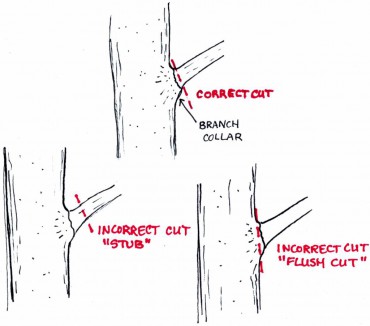 An Ounce of Prevention
An Ounce of Prevention
Choosing a tree that naturally has a good trunk and branch structure is what Juneau thinks would save homeowners the most heartache. He’s been called out to many a 30-year-old Thundercloud Plum that up and split down the middle without warning to the owners. To an arborist, looking at the tree’s structure would have set off warning bells years before. In these cases, he laments that pruning when the tree was a youngster would have prevented premature failure. Unfortunately, some of our most beloved ornamental trees have what is referred to as weak branch attachment, an unstable angle where the branch forks from the trunk. As the branch gets larger and heavier with age, it can tear away from the trunk, causing a fatal wound.
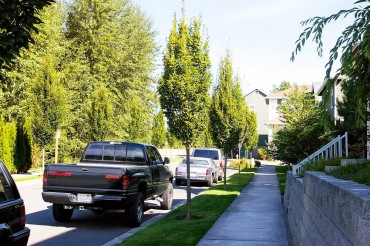
No need to stray away from Japanese maples and others with less than ideal branch structure, but understand that such trees require careful pruning in youth when the pruning budget is greater. If you have a silver maple, willow, Lombardy poplar, Austrian pine or Deodar cedar, have it pruned carefully and consider locating it where large branches or tops won’t cause harm if they do fail.
Even trees with better structure genetically can have faults. When browsing for a tree at the nursery, ask the certified professional horticulturist on staff to evaluate the branch structure on the tree being considered and to explain why one is preferred over the other. The correct planting technique is illustrated in part one of this article in the fall issue 2008 and summer issue 2008. After the second summer of watering regularly, hire an ISA certified arborist to inspect that same tree and do any structural pruning that will set it up for a robust maturity. It will protect your investment, and a tree is a worthwhile investment that pays handsome dividends with age.
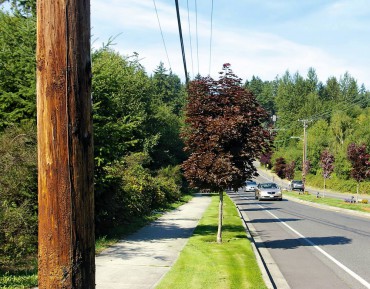
The Kindest Cut
How a correct pruning cut is made on a tree is counterintuitive and only in the past 20 years have scientists understood that both flush cuts and leaving a stub cause decay. But, if you don’t leave a stub and you don’t cut the branch off flush with the trunk, what else is there? It’s a hard concept to visualize, even with the illustration provided here. The best bet is, when you’re taking Fido on his walk, to look at many different trees in your neighborhood and notice the area where the branch meets up with the trunk. All trees are different, and on some, it is more obvious, but all trees have what is referred to as a branch collar. The branch collar is the slightly swollen or raised area where the trunk wood grows around the branch wood. The branch wood and trunk wood are different and this explains why knots fall out of lumber.
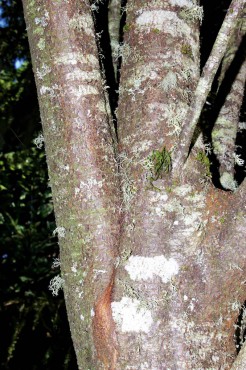
Never cut into the branch collar, which is what is referred to as a flush cut. Alternatively, never leave a long stub of branch beyond the branch collar. Take time to inspect the branch to be pruned in order to locate the branch collar and determine the angle at which it meets the branch. Then cut the branch off at that angle just beyond the branch collar. Anything different can cause decay.
For more details on branch collars and proper pruning cuts, check out the ISA website for images and diagrams or look at any recent book on pruning. Another option is to hire a consulting arborist — an ISA certified arborist who makes a living giving homeowners sage advice on how to care for their specific trees for a reasonable hourly rate.
Don’t Top Trees
One of the most egregious, yet common pruning mistakes is topping a tree. Topping is shortening a tree by lopping off main trunks or branches to a predetermined height. The founder of Plant Amnesty, in her best-selling book on pruning, “Cass Turnbull’s Guide to Pruning,” likens tree topping to cutting the head off a human body. The only difference is how long it takes the tree to die. Juneau says this is often true, and restricts such drastic cuts to a very small percentage of trees that would otherwise have to be removed but for some reason should not or cannot be, such as wildlife habitat trees in greenbelt areas, overgrown hedges or trees under power lines. Topping, whether occurring naturally (as in a severe storm), or deliberately, usually shortens the life of a tree, he says, making it a high-maintenance tree forever thereafter.
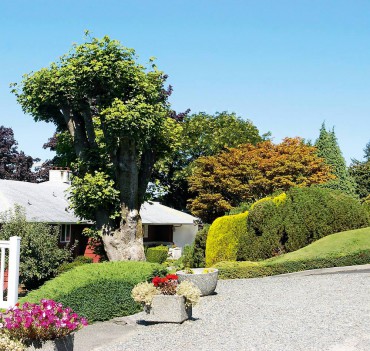
If the tree survives the topping, decay will enter at the wound and may spread through the trunk to the base. Depending on the tree’s size, species and vitality, as well as the size of the topping cut, rot can move down the trunk slowly or rapidly. The tree’s response to topping is to grow new tops and for large limbs below the cut to elongate and become unstable. Needless to say, a tree with a decaying trunk and unstable branches is a major safety concern, especially near buildings, streets, playgrounds and parking lots.
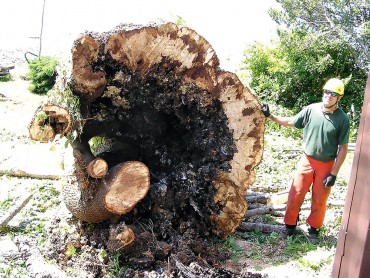
Arborists like Juneau have alternative tactics with which to open up scenic panoramas and clear branches from power lines. While the best way to prevent topping is to site a tree where it has sufficient space, the reality is that the planter had the best of intentions and probably had no idea how large and how fast the tree would grow or perhaps Mother Nature planted the tree. Crown-thinning is one of the techniques used to open up the branch structure of a tree to deliver more light to a shady garden below or to improve the view from a deck. Another topping alternative is windowing, which involves removing several branches close together in order to open a window through which to admire a waterscape.
Watching arborists perform their art way up in a massive Douglas fir is a harrowing reminder of the importance of hiring an ISA certified arborist with at least $1 million in liability insurance. While it makes the average person’s hands sweat, Juneau admits, when he’s pruning high up in a tree, that’s when he’s having the most fun.




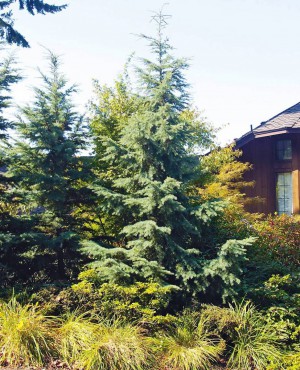

























Comments